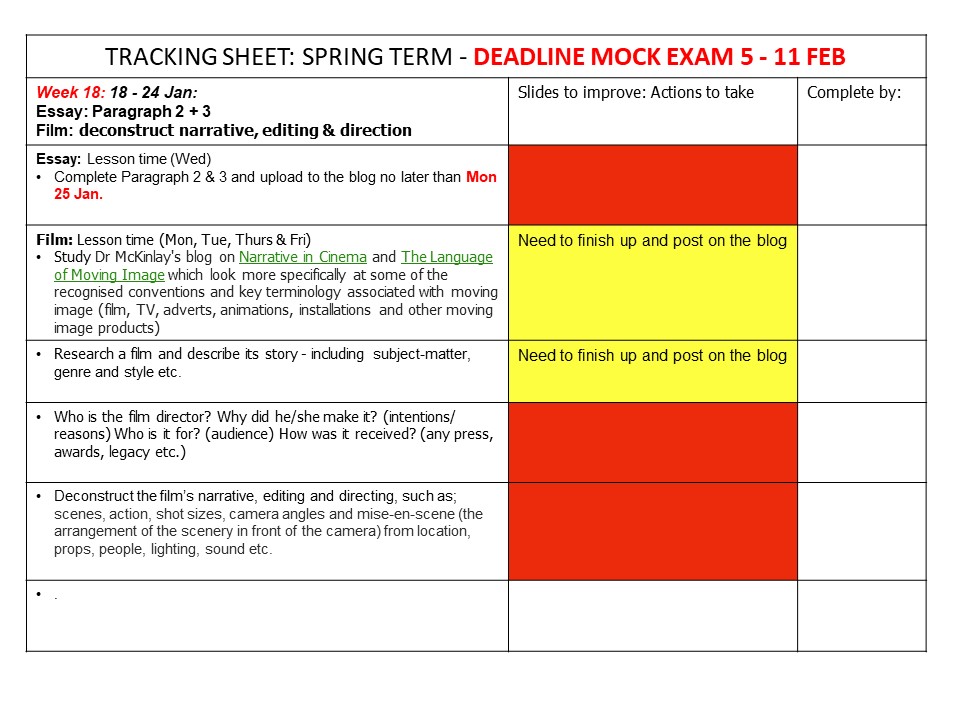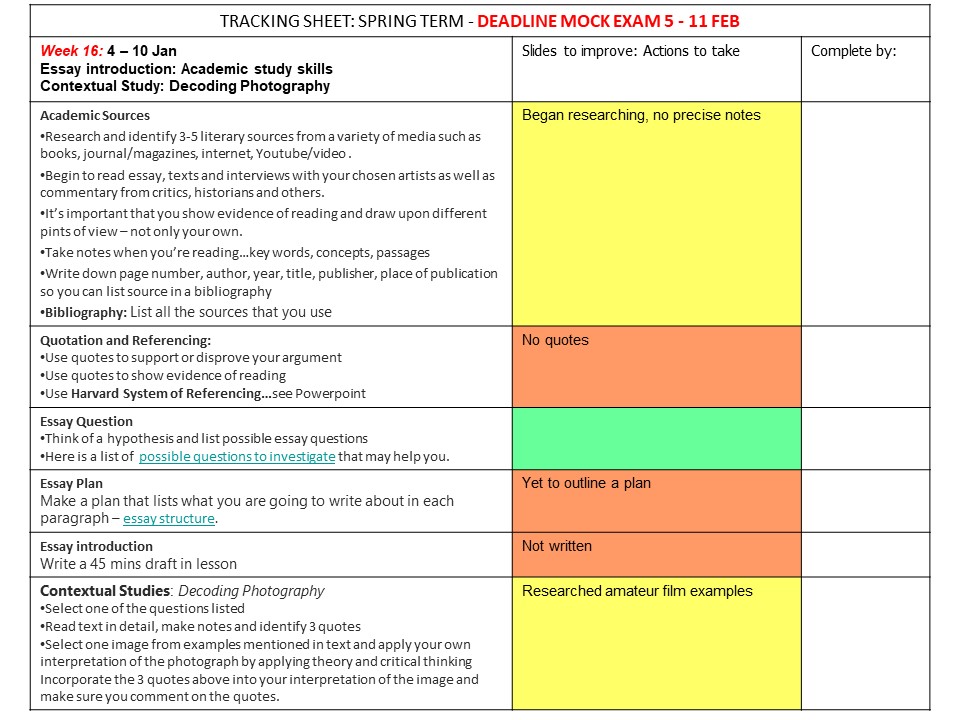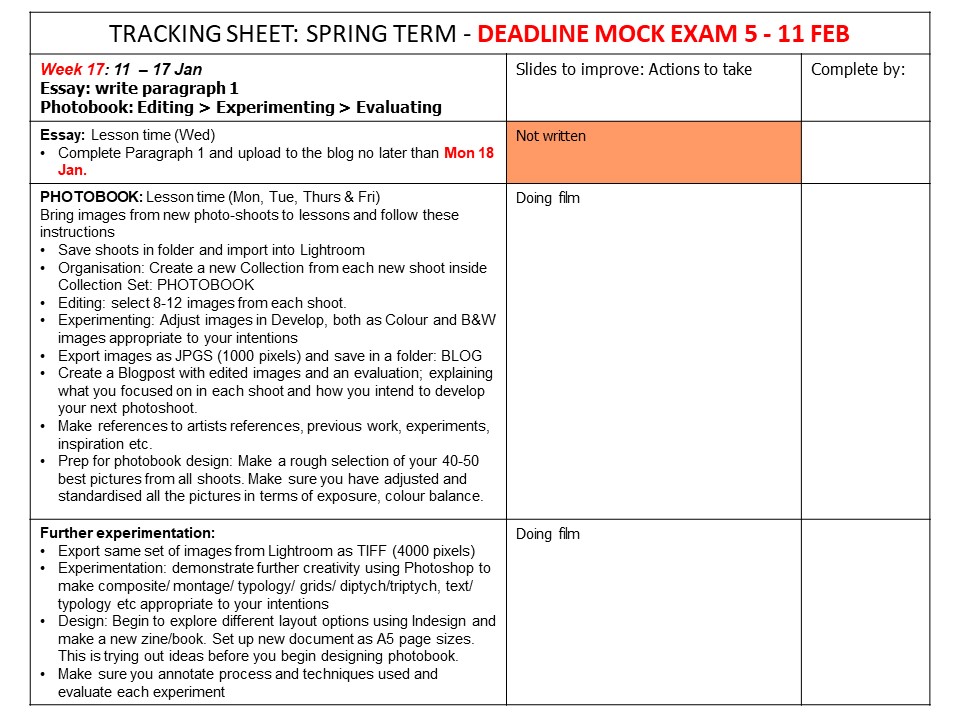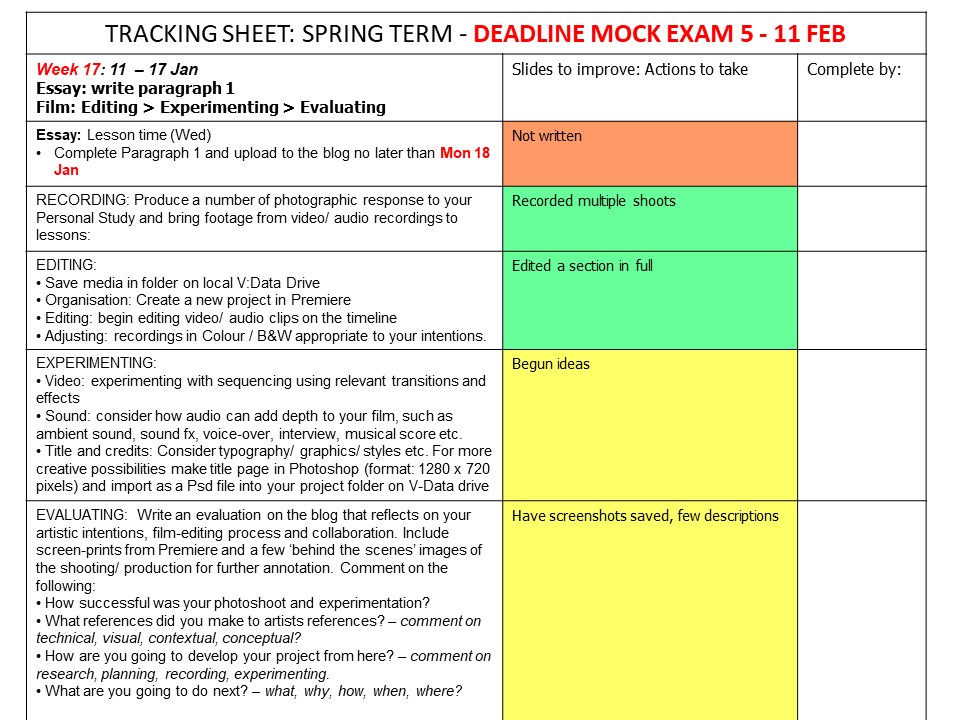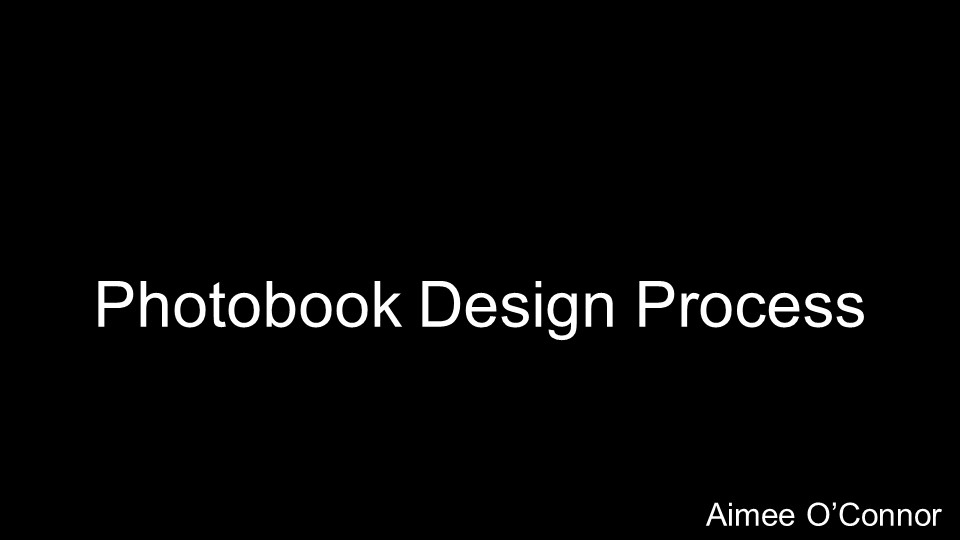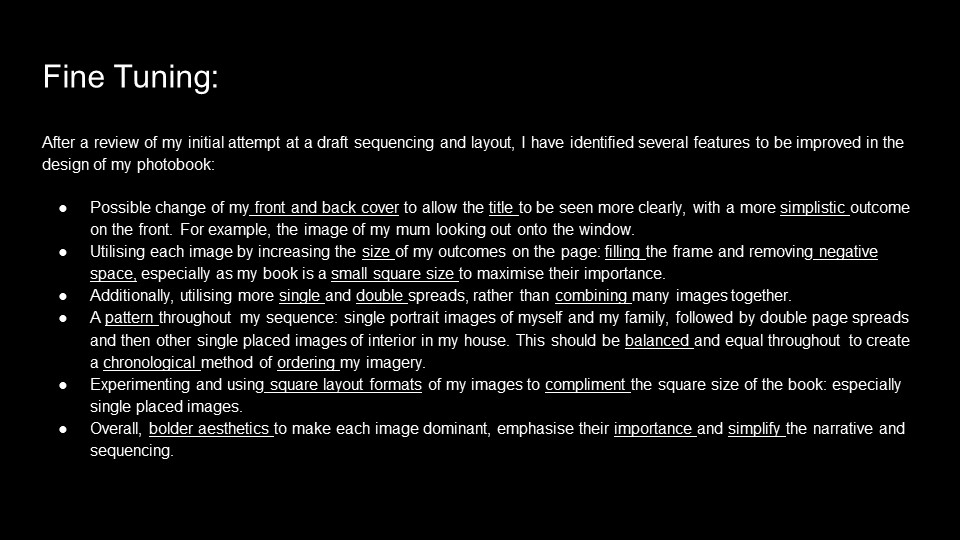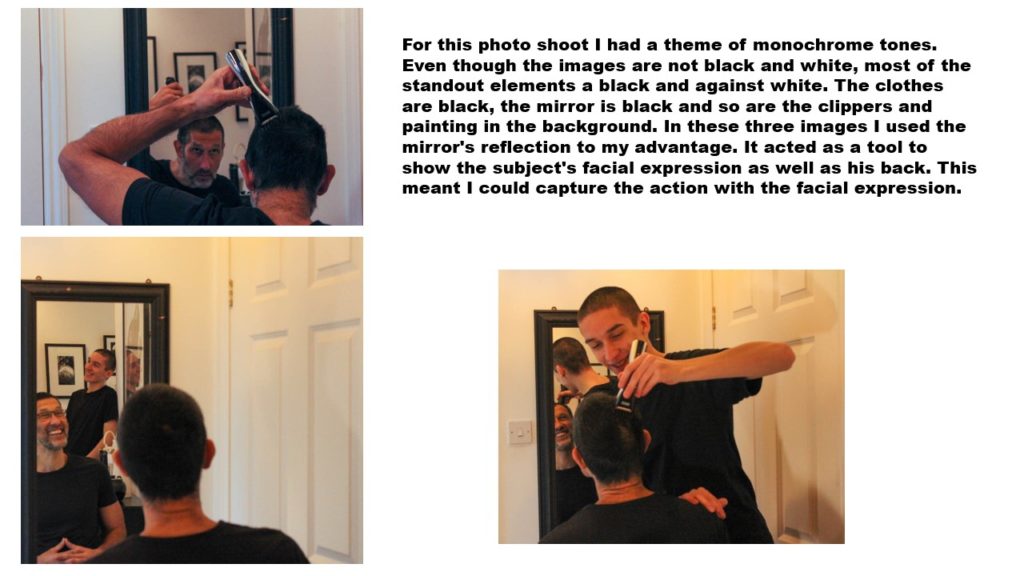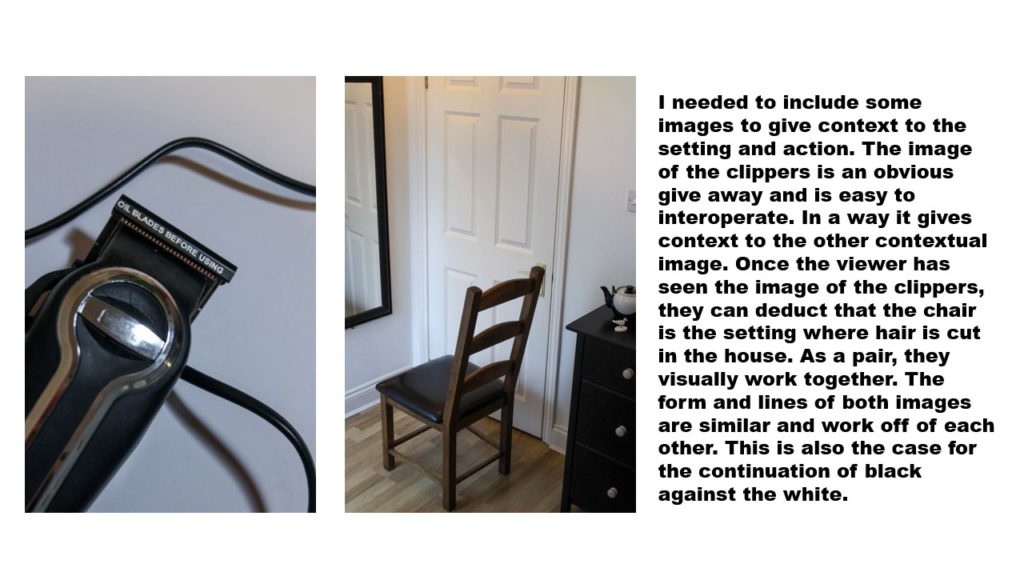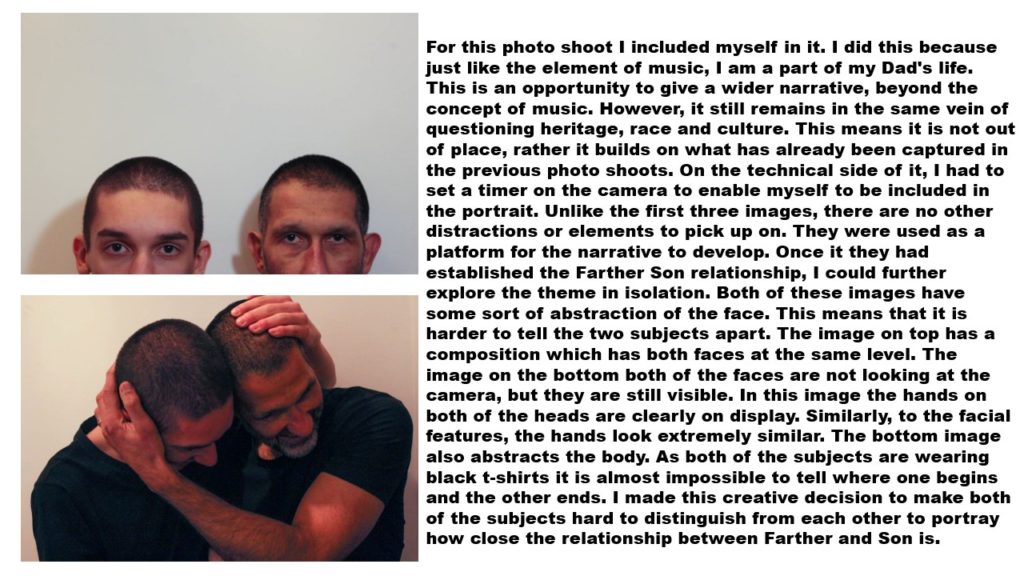Monthly Archives: January 2021
Filters
Photo-book Specification
The Narrative
Rebels, Rejects and Outcasts.
The photo-book is to be a self commentary about myself and the people I surround myself with; documenting the mischief and mishaps we experience as the modern youth. The book aims to capture the rebellious temperament of youth in the modern age. By incorporating a rejection of societal standards and the governing law, the project will show a depiction of the liberating and care-free nature our youth has and the sense of immortality that they approach life with. I want to change the view of the typically ‘corrupt’ lifestyle that society labels many young individuals as living by granting the audience with some insight into the modern youth culture of today. A theme of rebellion is to be presented throughout the book by presenting the sense of release felt from rejecting typical social standards, giving the reader an insight into the subjects’ hedonistic and rebellious subculture.
The book should impact those of all ages but resonate particularly with individuals who are of a similar age to the subjects within the book. However, the emotions and nature of the subjects may be shared with older generations, who may have previously expressed their identities in similar ways in their own youth. The book aims to present a youth subculture that expresses different attitudes to the standard accepted beliefs and values that older generations hold.
Design
For my photo-book, I want the general feel to be similar to that of a scrapbook. I’m planning to have physical inserts and ephemera, such as: Polaroids, parking notices, old debit cards. Furthermore, I plan to incorporate physical handwriting into the project, as inspired by Corrine Day’s ‘Diary’, adding captions and labels where I feel necessary.

Some reoccurring colours I want to appear in my photobook are red, yellow and black. Both red and yellow have connotations of caution and danger, though red can also represent anger, courage love and joy.
The colours will be present in some of the ephemera, such as the parking notice or the spray paint from one of my photoshoots.
FRONT AND BACK COVER:
I will begin this colour theme on the front cover. The cover is to have a visually striking combination of red and black, conveying a sense of power that the subjects inside have. Layering the images on the front cover straight away gives the reader an insight into the scrapbook-nature of the book and the overall messiness and complicated nature of the subjects’ lives.
I plan to produce a portrait photo-book, allowing for the placement of establishing landscape shots comfortably over two pages. Additionally, a portrait book is similar to that of diaries, portfolios, sketchbooks and other personal items one might own or carry around with them. I aim for the book to be larger than a standard novel but small enough to make it portable. My reasoning for this is to have something that allows for a clear depiction of the photographs inside but can be stored or carried about with ease.
Furthermore, the cover of the book is to be a matte hardcover. A physically hard cover is durable, depicting the strength of the relationships within the book, as well as the strength of each of their characters and personalities. A matte finish means the cover can collect swirls, scratches and other imperfections over time which can make the reader feel as though they’ve added to the genuinity of the book, in turn physically linking them with the subjects in the book.
PAPER:

My choice of paper was one that adds an organic feel to the photobook. I decided against glossy paper as it would make the book look and feel more artificial and synthetic, both of which are concepts I’m aiming to avoid. The eggshell paper I favoured provides a rustic element to the feel of the book. As it is textured, it allows the reader to engage with the book with a sense of touch. This ties in nicely with the scrapbook design I intend to produce. With a mixture of interactive inserts alongside the textured paper, the book as a product has more authenticity and feels unique, giving the reader a privileged insight into the lives of the subjects inside. This, in turn, encourages the reader to handle the book delicately and with sentiment.
TITLE:
For the title of the photo-book, I decided on ‘Passing Youth‘. This links to the content of the book, as it is a double entendre. Firstly, the title relates to the depth of the youth subculture and the type of characters found within. The first meaning behind the title is that it stands for ‘the passing of youth’, which represents how youth itself is a short period of time; one everyone experiences that is extremely fleeting. This momentary period in everyone’s life is precious and is often what people look back on in their older years, making my photobook nostalgic for older groups as well as making those of a younger age want to take advantage of their freedom during this period. Secondly, ‘Passing Youth’ can also place the reader in the shoes of someone who is physically observing these adolescents. This gives the reader the option to view the subjects the same way a passerby might, looking at the reckless and careless nature of the characters and judging them on a superficial level, as society might do. In response to this judgement, I hope that the hedonistic images and physical inserts will alter the way these youths are perceived, by granting insight into their lives, their emotions and their actions, therefore removing the societal judgment teenagers are often greeted with and instead replacing it with a new understanding which may have previously been overlooked.
ARCHITECTURE:
As previously mentioned, physical inserts play an important role in the architecture of the photobook. They allow the book to become interactive, giving the reader the option to physically connect with the narrative. Firstly, a parking notice conveys reckless and careless driving. This particular piece of ephemera is large enough to take up a substantial amount of space within the book. I will designate it a singular page to which I will juxtapose with either an image depicting a car boot filled with alcoholic paraphernalia (to convey careless driving) or against a portrait of the individual who received the notice, which grants insight into the type of character and, more specifically, the type of driver the subject is.
Another important physically element I am incorporating into the book is a debit card. So as to protect my personal data, the card has been cancelled and is therefore void. A major association with cards in the youth subculture is the ingestion of illegal substances. Cards, whether it be a driving license, credit card or gift card are used to crush up pills or divide up portions of a substance. This association adds to the recklessness of adolescents and the adaptation they take in order to carry out their hedonistic lives.
Finally, by incorporating polaroid pictures taken by the subjects themselves it amplifies the personal aspectof the book. The polaroid images have been physically handled and taken by the subjects, therefore adding another physical link to the characters in the book. This extra insight into the characters presented creates a greater rapport between the reader and the subjects within.
SEQUENCING:
I want the first image the reader sees to be a hedonistic image, so as to establish the overall tone of the book. By choosing an image with a strong, positive emotion, I can convey the type of experiences the modern youth culture seek out. I plan to open the photobook with a portrait of a subject covered in spray-paint from one of my shoots. This begins the narrative ambiguously, due to the lack of context as to why the subject is covered in the paint.
Adversely, I may use a debit card as the first thing the reader sees, placing it on the right page of a double page spread. Placing this insert first leaves the significance of the card up to interpretation by the reader as they progress through the book. The context of the card, as well as the paint, will be unravelled later on through establishing shots so as to encourage the reader to flip back through the book with knowledge of the context. Alternatively, I may place the debit card insert next to the image associated with it, so as to give the reader a physical connection to the moment captured in the image beside it.
Design: Moodboard

PHOTOBOOK DESIGN PROCESS
SHOOT 4
SHOOT 3
Film Research – Inception
“I’d written Inception as sort of a clever-clever heist movie. And heist movies tend to be deliberately superficial and glamorous. I needed him to bring the thing together, open it up to the audience and make it a human story, and he’s done that extraordinarily well.” – Chris Nolan (Director)
Research and Narrative: This Sci-Fi/Action film has inspired me along with photographers due to my idea being about surrealism, dreams and nihilism. The film itself is an interesting concept and has many plot twists that leave the audience shocked and wanting to know more. My own film consists of a similar concept of a dream within reality and my goal is to ensure that the viewer is so emerged within the film that they forget that they are watching the protagonists dream and not their real life. The plot twists are what makes a good film in my opinion hence why I picked inception as the movie that I want to base my project on with influences from other things also. Mental health also links into the film as Dom (the protagonist)is dealing with his own mental issues which impacts on the main plot of the movie and can cause a huge disaster of going into limbo. His poor mental health is caused by his late wife passing away due to the unbearable thought of not knowing what’s real life and what is just a dream, her death take a dramatic toll on his mental well-being as well as her being nihilistic which links into my film and the fact that my film is about what is real and what is just in our imagination. When breaking down the beginning middle and end of this film it start a little bit like this…
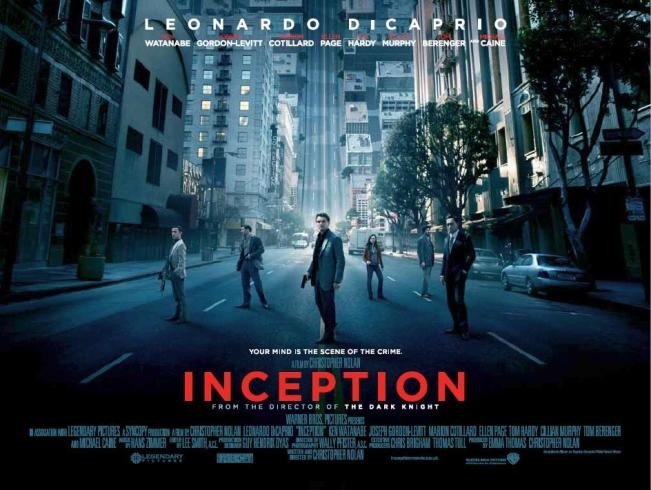
Summary: Dom Cobb (Leonardo DiCaprio) is a thief with the rare ability to enter people’s dreams and steal their secrets from their subconscious. His skill has made him a hot commodity in the world of corporate espionage but has also cost him everything he loves. Cobb gets a chance at redemption when he is offered a seemingly impossible task: Plant an idea in someone’s mind. If he succeeds, it will be the perfect crime, but a dangerous enemy anticipates Cobb’s every move. In the film Cobb does succeed to plant the idea into the man’s mind.
More Specifically:
The Beginning: Cobb is dragged to a table with Saito and Saito says something along the lines of “are you here to kill me? I know what this is. I’ve seen one before, many years ago. It belonged to a man from a half remembered dream.” (I think talking about his totem).
The Middle: Dominic Cobb is the foremost practitioner of the artistic science of extraction, inserting himself into a subject’s dreams to obtain hidden information without the subject knowing, a concept taught to him by his professor father-in-law, Dr. Stephen Miles. Dom’s associates are Miles’ former students, who Dom requires as he has given up being the dream architect for reasons he won’t disclose. Dom’s primary associate, Arthur, believes it has something to do with Dom’s deceased wife, Mal, who often figures prominently and violently in those dreams, or Dom’s want to “go home” (get back to his own reality, which includes two young children). Dom’s work is generally in corporate espionage. As the subjects don’t want the information to get into the wrong hands, the clients have zero tolerance for failure. Dom is also a wanted man, as many of his past subjects have learned what Dom has done to them. One of those subjects, Mr. Saito, offers Dom a job he can’t refuse: to take the concept one step further into inception, namely planting thoughts into the subject’s dreams without them knowing. Inception can fundamentally alter that person as a being. Saito’s target is Robert Michael Fischer, the heir to an energy business empire, which has the potential to rule the world if continued on the current trajectory. Beyond the complex logistics of the dream architecture of the case and some unknowns concerning Fischer, the biggest obstacles in success for the team become worrying about one aspect of inception which Cobb fails to disclose to the other team members prior to the job, and Cobb’s newest associate Ariadne’s belief that Cobb’s own subconscious, especially as it relates to Mal, may be taking over what happens in the dreams.
The End: Saito and Cobb sitting together at the table again. Same kind of setup, but this time Saito says, “have you come to kill me? I’m waiting for someone..” and Cobb finishes his sentence by saying “someone from a half remembered dream.” Cobb essentially tells him they’re in limbo and they presumably kill themselves to wake up to reality. Although the ending leaves the viewer wondering if Cobb is back in reality or if he is still trapped in a dream, he can tell due his totem. Dom Cobb’s totem is a spinning tractricoid top that originally belonged to Mal (his wife). Should he spin the top and it topples over, he is awake; if it continues to spin, then he is still dreaming.
Theory of Narratives in Films
When looking at moving image products, it is therefore possible to look for patterns, codes, conventions that share a common features. In other words, narrative theories look at recognisable and familiar structures, that help us to understand both how narratives are constructed and what they might mean. For example, it is clear that narratives are a combination of many individual elements (sound, image, text etc) which are edited (connected) together. Narratives are organised around a particular theme and space and are based in an idea of time. So for example, many narratives (Film, TV, Radio) are usually linear and sequential, in that they start at ’00:00′ and run for a set length. This means that they normally have a beginning, middle and end. “
“A whole is what has a beginning and middle and end” – Aristotle Poetics.
However, as with all creative work, it is possible to break, alter or subvert these rules and are subject to other conventions, rules and codes. For example, narrative media structures (ie film, TV drama, music video, advertising etc as opposed to theatre, drama, live events etc) do not generally play in real time. As such, they employ elision or ellipsis in that some elements are missing. Similarly, time often moves backwards (flashbacks) or forwards (flash forwards) at moments which break the linear sequence. Time can also run simultaneously, in that it is possible to play-out different narratives at the same time: simultaneous or parallel narratives. Narrative strands are even able to be flagged up as something that needs to known (or will be fully developed) later, known as foreshadowing. This raises the concept that the audience are then given some information, feelings, ideas or logic that the on-screen actors do not have access to, which is called dramatic irony. An example of dramatic irony in this movie is the t the protagonists wife still thinks she is in a dream when she is in reality so therefore she jumps ion a balcony to get back to the “real world” and leaves the main character devastated and the audience in shock and dibelief.
Narrative theory can be applied to moving image texts but in many ways, narrative theory transcends a specific media form, such as, film and television and is able to take on a much greater significance in terms of how we organise our lives, our days, our weeks, our years, how we interact with each other, how we organise our memories, our ideas, aspirations and dreams.
specification
Narrative: What is your story?
Describe in:
- 3 words belonging and identifying
- A sentence a story of a young lad trying to fit in and conform
- A paragraph I am telling the story of the life of an average teenage boy in Jersey and the struggles and pressures that occur. I am trying to communicate with the viewer from an internal perspective how these pressures affect someones well being and safety. I want to demonstrate the result of societal pressures on a young male adult from childhood through to adulthood. I am using the repetition of the protagonist technique to draw attention away from the subject himself and towards the ideologies and conventions that he represents
Design: Consider the following
- How you want your book to look and feel – I want the book to feel hard, heavy and real to emphasize the importance of the subject matter.
- Paper and ink – rough paper / gritty
- Format, size and orientation – Landscape orientation
- Binding and cover
- Title – Arrogance Love Fury Innocence Envy
- Structure and architecture
- Design and layout -Full bleed images, minimal comparison to amplify the meaning of each individual image
- Images and text
PHOTOSHOOT PLAN
What
For my first photoshoot, as mentioned, I will try and capture masculinity through the lens, and will do this by taking photos of objects often associated with masculinity, such as toolboxes, tools, cars, weights, etc.
Where
At home in the garage which is a great setting, symbolic of “the man cave” but also at my work which is also a garage.
When
I am planning to go in the late afternoon/early evening, winter sunset so around 4pm-5pm.
Why
This will allow for great low light with orange tint which will translate well to black and white photos, similar to Mapplethorpe and Weinberger. I am going at that time so that the lighting for my photos is clear and hopefully before the cloudy skies and rain which is what the weather is usually like in the afternoon.
How
I will be using my Canon77D camera to take these photos and I will choose a high ISO and medium exposure so the photos are clear and not too dark, as most of the darkening will occur in the editing process when I will increase shadows and darkness as well as vignette in the photo. Furthermore, having brighter photos means there is more to work with when it comes to editing on Adobe Lightroom CC as the photo has more detail due to more light highlighting more aspects in the photo in higher detail. I will also adjust the settings accordingly depending on the changing weather.
PHOTOBOOK SPECification
Narrative: What is your story? Describe in:
3 words: strength, growth, love
A sentence: The story I am portraying in my photo book is all about how masculinity is portrayed, what it means to be masculine and the changes/challenges boys face during adolescence.
A paragraph: As Robert Mapplethorpe said himself; “I am obsessed with beauty. I want everything to be perfect, and of course it isn’t. And that’s a tough place to be because you’re never satisfied”. I share the same desire for perfection in my own appearance, both mentally and physically. This need for perfection comes as a sort of validation, a purpose. I want to highlight these struggles but also highlight other struggles and negative mind thoughts men face during adolescence, the need to fit a certain mould, look a certain way, act a given way, and the aspiration to achieve certain things in order to prove to themselves that they are male. Is this necessary? Should men face these mental struggles? Or is it a natural part of life? What does it mean to be male? I will also explore the mental health aspect men face, as well as promoting self love and rebelling against the expectations of appearance on social media also being key themes in my photo-book. I will also compare Mapplethorpe’s work with Karlheinz Weinberger, another artist who explored the same topic.
Design: Consider the following
How you want your book to look and feel: I want my book to be minimalist and simple. I want it to have a smooth feel to it and for it to be pleasing to the eye with a black and white colour scheme representative of Mapplethorpe’s (my artist’s) work and Karlheinz Weinberger’s work.
Paper and ink: I want to use black ink in a basic font to keep the attention on what the writing is about instead of what it looks like and also for the attention to be on the photographs that I produce. I want photo finish glossy paper as I find this has some of the highest definition and is the clearest unlike matte paper.
Format, size and orientation: I want my book to be A5 and landscape as smaller books result in higher detail as the photo retains its resolution however on a smaller page. I also think smaller books are simply more appealing aesthetically.
Binding and cover: In terms of my cover, I want the book to be hardback for a professional look and feel. I want the image on the front and rear cover to be environmental photos of objects, no humans, for a abstract feel that doesn’t give away what the story is about, it makes the reader question it and become intrigued, thus more likely to pick it up and open it. For example, I might have a set of dumbbells or a tool box on the front and rear pages that symbolize masculinity but don’t scream it to your face, it’s more subtle which is the theme I am going for, as it nicely contrasts against the hard, strong, powerful conotations of the term “masculine”.
Title: Virtruvian Man: the ideal body composition, the perfect male, essentially is what every man aspires to be.
Design and layout: For my design and layout, I want to have one image per page similar to my Zine project. In addition, similarly to my Zine, I will also have my story in chronological order. I have a beginning, middle and end to my story.
tracking and monitoring-


